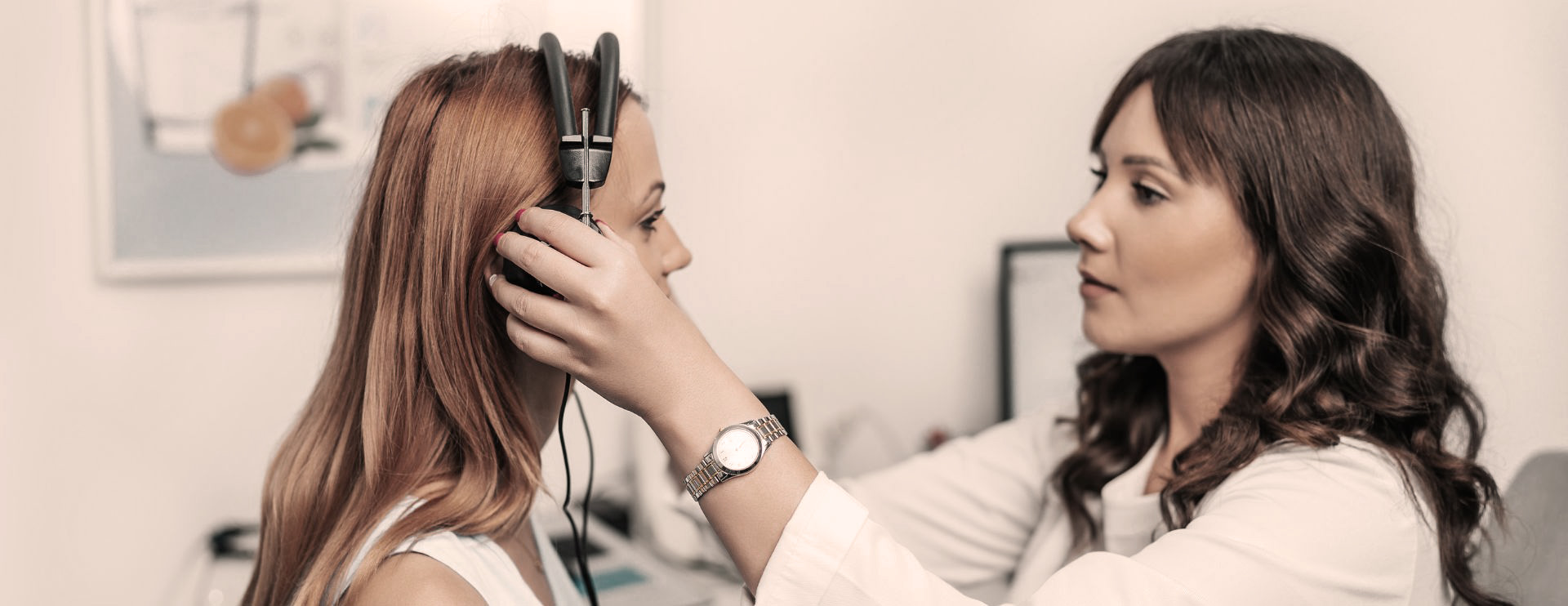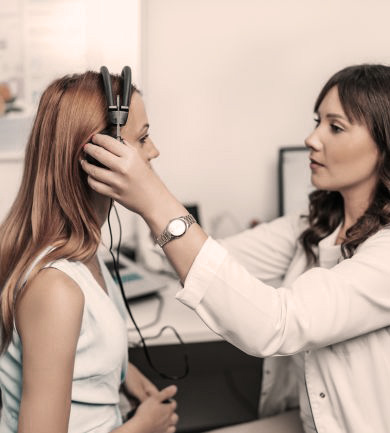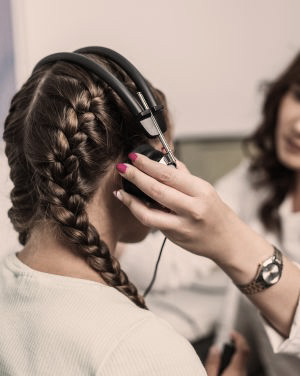

Audiometry
The term audiometry encompasses a range of techniques used to assess a patient’s hearing. A distinction is made between subjective audiometric tests, in which the patient provides a response to an auditory stimulus, and objective audiometric tests, in which these responses are collected by a measuring device.
Subjective hearing tests
In tonal audiometry, pure tones of different frequencies are used to measure the decibel threshold at which each tested frequency is perceived by the patient. The results are expressed in a graph called a pure-tone audiometry. Usually, frequencies between 125 Hz and 8000 Hz are tested. In some cases (hearing impairments caused by ototoxicity, noise exposure, acoustic traumas, or in the assessment of patients with tinnitus), frequencies from 8000 Hz to 20,000 Hz can be tested (high frequency audiometry).
Speech audiometry uses lists of sentences, words with one or two syllables or logatoms (nonsense words). Speech comprehension (intelligibility) and the ability to distinguish between different phonemes (discrimination) are tested.
This assessment, which complements that carried out with pure-tone audiometry, is essential for assessing the patient’s hearing difficulties and their cognitive and social repercussions. Speech audiometry can be performed in mono or binaural, with headphones or in a sound field, in silence or in noise, with or without a hearing aid. It is also possible to send different information to both ears simultaneously, as part of an assessment of hearing, speech or attention (dichotic testing).
Speech audiometry in noise is becoming increasingly important in audiology. It can be used to detect an early and embarrassing hearing problem for the patient, even if tonal and speech audiograms in silence are still normal. As of 2018, it is compulsory in France for patients to be prescribed a hearing aid, but it is still not performed often enough. It is part of our assessment of hearing problems.


Objective hearing tests
They assess the auditory system without the patient’s intervention. They include :
In recent years, the comparison of subjective and objective hearing tests has opened up a new field of exploration and understanding of previously poorly known hearing disorders : Auditory Neuropathy Spectrum Disorders or « hidden hearing loss ».
All the tests presented in this section are offered at our centre and performed under optimal conditions (soundproof booths, calibrated equipment) by qualified audiologists.
Whichever test is used to assess a patient’s hearing, it is only of value if it is part of a comprehensive evaluation of the auditory system. This test should include an accurate anamnesis and an otoscopy performed with a microscope, supplemented, if necessary, by an assessment of the vestibular system (balance sensors of the inner ear).
